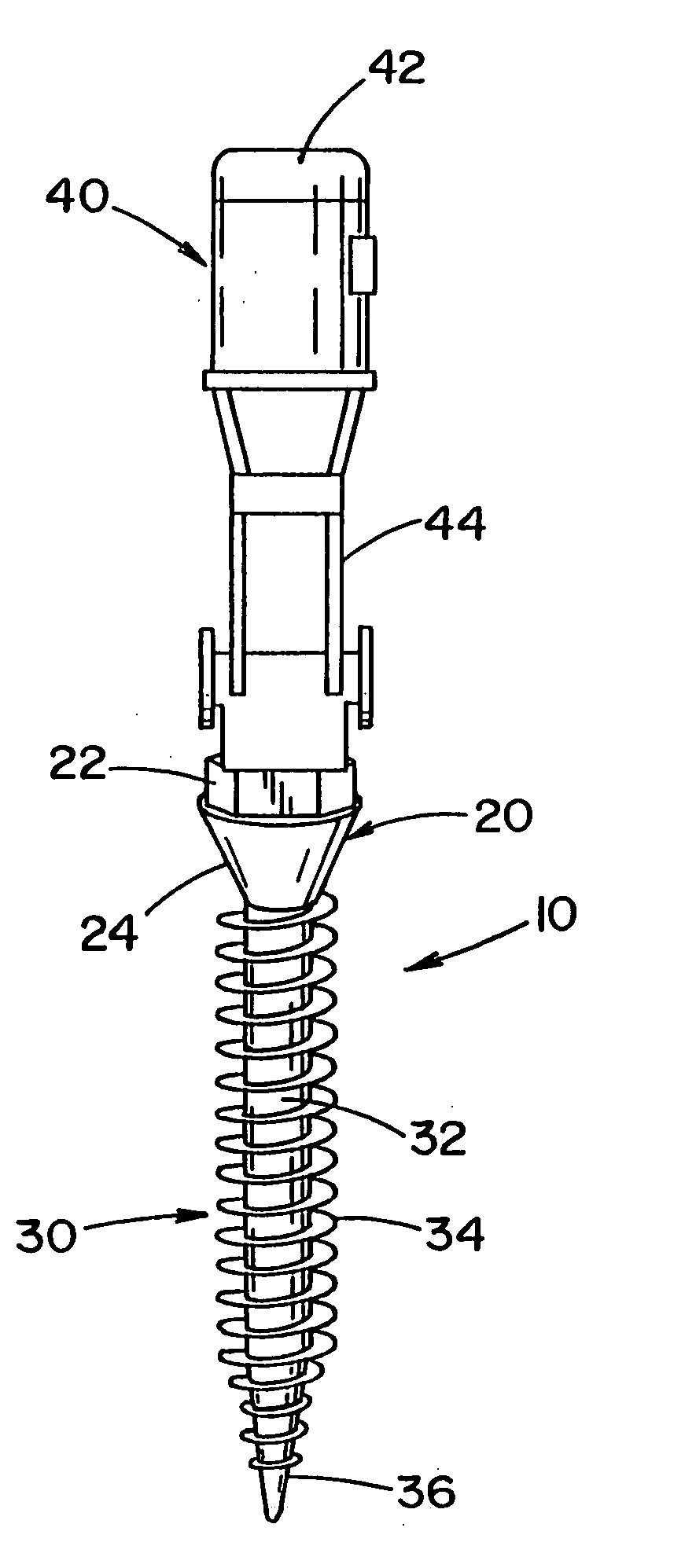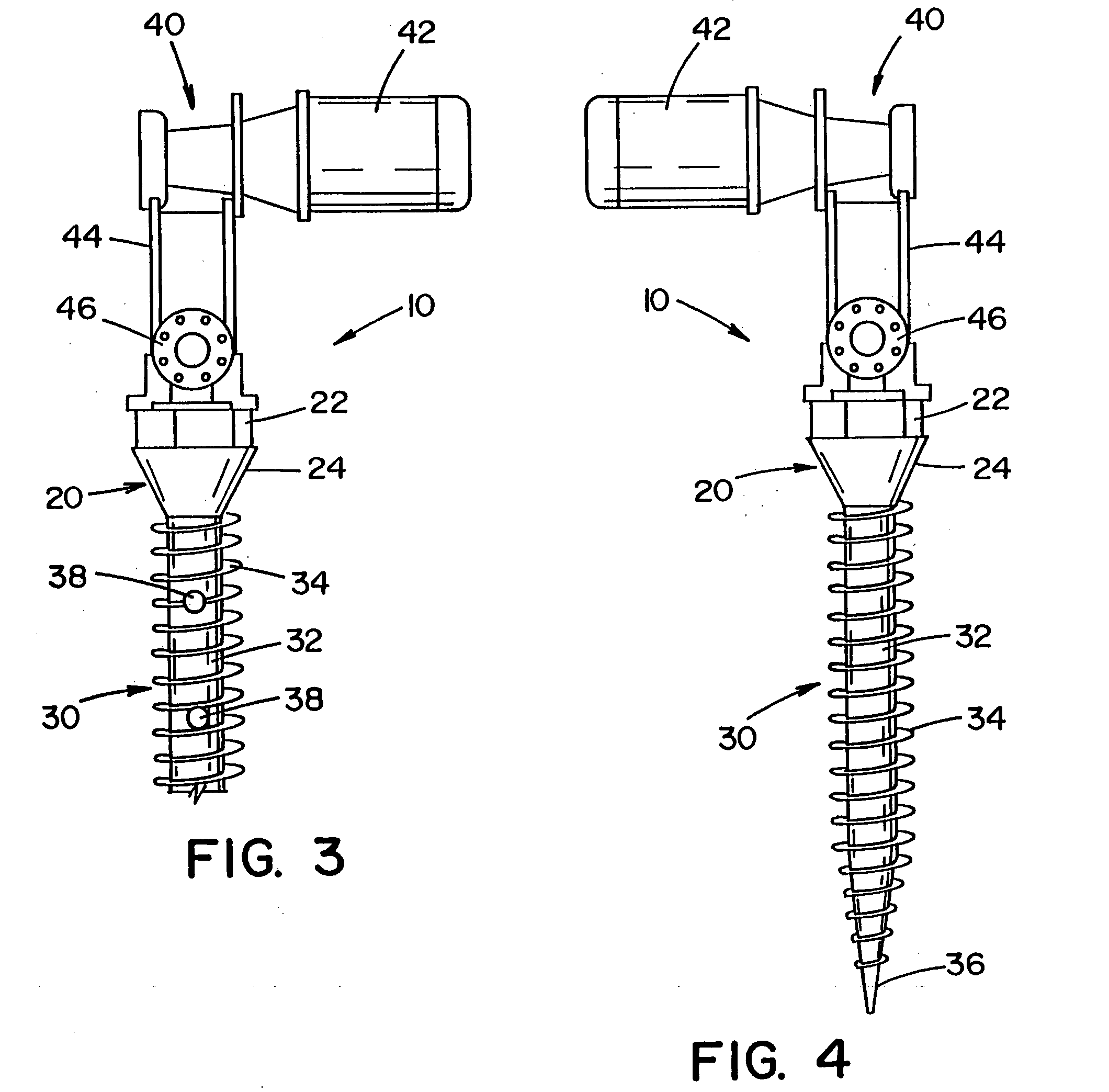Implant device
a technology of implants and devices, applied in the field of implants, can solve the problems of most costly health problems in society, pain and pathology of the spine, and large suffering of victims, and achieve the effects of facilitating the positioning of implants, facilitating insertion, and minimal chance of surgical difficulty
- Summary
- Abstract
- Description
- Claims
- Application Information
AI Technical Summary
Benefits of technology
Problems solved by technology
Method used
Image
Examples
Embodiment Construction
[0090] Referring to the drawings, wherein the showings are for the purpose of illustrating the preferred embodiment of the invention only and not for the purpose of limiting same, FIGS. 1-11 illustrate an implant that is disclosed in United States Patent Publication No. 2004 / 0243130, which is incorporated herein. In particular, FIG. 1 illustrates a pedicle screw 10 for insertion into bone and / or cartilage of a vertebrae. The pedicle screw is described with particular reference for use with a surgical procedure involving the vertebrae; however, it will be appreciated that the pedicle screw can be used in other regions of a body (e.g., leg, arm, hand, foot, knee, hip, pelvis, rib cage, skull, etc.) to promote healing in such regions. It will also be appreciated that the bone screw system can be used in other areas of the vertebrae such as, but not limited to, the lamina, facets, etc. It will also be appreciated that the implant can be a form other than a pedicle screw.
[0091] Pedicle ...
PUM
 Login to View More
Login to View More Abstract
Description
Claims
Application Information
 Login to View More
Login to View More - R&D
- Intellectual Property
- Life Sciences
- Materials
- Tech Scout
- Unparalleled Data Quality
- Higher Quality Content
- 60% Fewer Hallucinations
Browse by: Latest US Patents, China's latest patents, Technical Efficacy Thesaurus, Application Domain, Technology Topic, Popular Technical Reports.
© 2025 PatSnap. All rights reserved.Legal|Privacy policy|Modern Slavery Act Transparency Statement|Sitemap|About US| Contact US: help@patsnap.com



